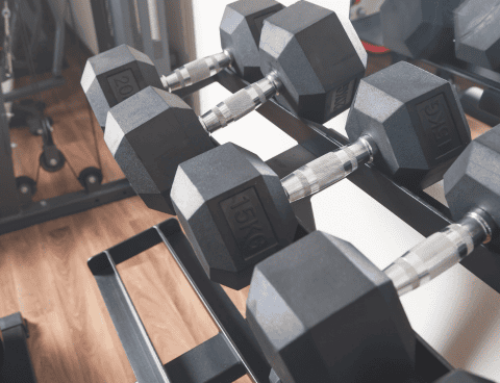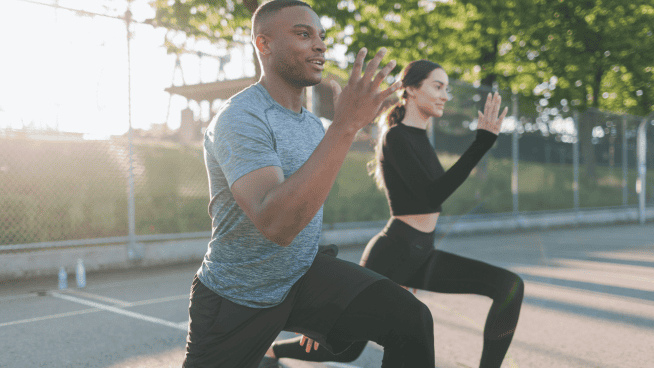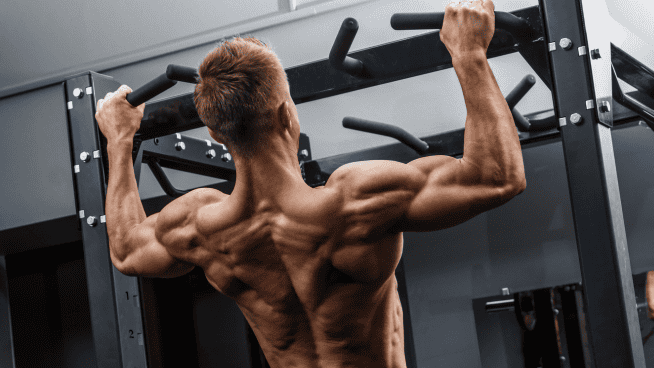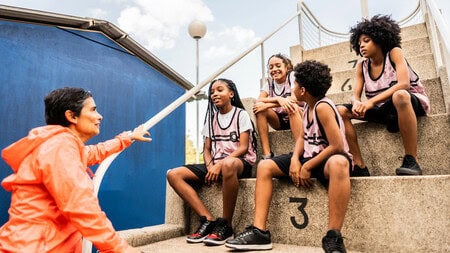Big Traps May Look Good, But Do You Need Them?
Big trapezius muscles are one of the first areas of the body athletes want to work on. Some guys develop what we call “no-neck syndrome’—their traps get so big they completely obscure the neck. They think if their training doesn’t result in “boulders on the shoulders,” they must be weak or doing something wrong.
Can Big Traps Improve Your Athleticism?
From an aesthetic standpoint, big traps—actually we’re specifically referring to the upper traps—do look good. From a performance standpoint, however, big traps are not that important.
“Having big traps doesn’t help improve anything in particular on the field, other than some intimidation factor,” says Tony Gentilcore, co-founder of Cressey Performance (Hudson, Massachusetts).
Tony Bonvechio, owner of Bonvec Strength, adds, “Big traps are not functional to sports performance.”
However, you shouldn’t ignore these muscles—they do serve a purpose. “Your upper traps help with upward rotation of the scapulae,” says Gentilcore. The muscles that act on your scapulae must have sufficient strength to keep your shoulders stable, mobile and injury free, so this is an important benefit.
RELATED: Should Athletes Press Overhead?
The Problem With Overdeveloped Traps
So, developing big traps obviously is not the best use of your time as an athlete. But is there any harm in doing it?
As a matter of act, there is.
If you spend too much time developing your traps, they can become overactive, potentially contributing to one of the four components of upper cross syndrome, which causes back pain, posture problems and upper-body mobility limitations. If you’re an overhead athlete—meaning that you throw a ball or swing a racquet with your arm overhead—this is a serious problem, one that can impair your technical skills and ultimately lead to an injury.
I Have Small Traps. Should I Do Shrugs?
Let’s say you have small traps and downward-sloping shoulders. To address the issue, your first inclination is to perform Dumbbell or Barbell Shrugs. First, we applaud you for identifying a weak point in your body and attempting to fix the problem. And Shrugs will help to an extent, but not without consequences.
“Shrugs promote more depression because there’s no movement of the shoulder blades during the exercise itself,” says Gentilcore. “The weight pulls guys down even more into depression.” Again, this can set you up for shoulder dysfunction and an injury.
OK, But I Don’t Want Puny Traps. What Should I Do?
Gentilcore and Bonvechio offer a few options that can help you develop your traps in ways that build functional strength for your sport. And, maybe you’ll develop a little size.
Perform Overhead Barbell Shrugs. This Shrug variation works your traps in a position that allows optimal scapulae function.
Lift Heavy. Cleans, Snatches, Deadlifts and Farmer’s Walks develop other aspects of your strength while also working your traps.
Play Your Sport. Battling with opponents—especially in football and wrestling—develops your traps through isometric contractions.
RELATED: Why Calf Raises Are a Waste of Time
Sources: MikeReinold.com, TonyGentilcore.com
RECOMMENDED FOR YOU
MOST POPULAR
Big Traps May Look Good, But Do You Need Them?
Big trapezius muscles are one of the first areas of the body athletes want to work on. Some guys develop what we call “no-neck syndrome’—their traps get so big they completely obscure the neck. They think if their training doesn’t result in “boulders on the shoulders,” they must be weak or doing something wrong.
Can Big Traps Improve Your Athleticism?
From an aesthetic standpoint, big traps—actually we’re specifically referring to the upper traps—do look good. From a performance standpoint, however, big traps are not that important.
“Having big traps doesn’t help improve anything in particular on the field, other than some intimidation factor,” says Tony Gentilcore, co-founder of Cressey Performance (Hudson, Massachusetts).
Tony Bonvechio, owner of Bonvec Strength, adds, “Big traps are not functional to sports performance.”
However, you shouldn’t ignore these muscles—they do serve a purpose. “Your upper traps help with upward rotation of the scapulae,” says Gentilcore. The muscles that act on your scapulae must have sufficient strength to keep your shoulders stable, mobile and injury free, so this is an important benefit.
RELATED: Should Athletes Press Overhead?
The Problem With Overdeveloped Traps
So, developing big traps obviously is not the best use of your time as an athlete. But is there any harm in doing it?
As a matter of act, there is.
If you spend too much time developing your traps, they can become overactive, potentially contributing to one of the four components of upper cross syndrome, which causes back pain, posture problems and upper-body mobility limitations. If you’re an overhead athlete—meaning that you throw a ball or swing a racquet with your arm overhead—this is a serious problem, one that can impair your technical skills and ultimately lead to an injury.
I Have Small Traps. Should I Do Shrugs?
Let’s say you have small traps and downward-sloping shoulders. To address the issue, your first inclination is to perform Dumbbell or Barbell Shrugs. First, we applaud you for identifying a weak point in your body and attempting to fix the problem. And Shrugs will help to an extent, but not without consequences.
“Shrugs promote more depression because there’s no movement of the shoulder blades during the exercise itself,” says Gentilcore. “The weight pulls guys down even more into depression.” Again, this can set you up for shoulder dysfunction and an injury.
OK, But I Don’t Want Puny Traps. What Should I Do?
Gentilcore and Bonvechio offer a few options that can help you develop your traps in ways that build functional strength for your sport. And, maybe you’ll develop a little size.
Perform Overhead Barbell Shrugs. This Shrug variation works your traps in a position that allows optimal scapulae function.
Lift Heavy. Cleans, Snatches, Deadlifts and Farmer’s Walks develop other aspects of your strength while also working your traps.
Play Your Sport. Battling with opponents—especially in football and wrestling—develops your traps through isometric contractions.
RELATED: Why Calf Raises Are a Waste of Time
Sources: MikeReinold.com, TonyGentilcore.com











